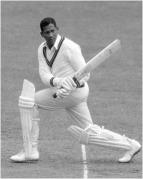The Forties in British Guiana – Our Age of Innocence
Nostalgia 430 – by Godfrey Chin.…godchin1@aol.com….
Dedicated to my ‘Geritol Posse’ incl Dr Vibert Cambridge – Pluto Martindale, Cecil Glasgow, and Peter Halder – and of course ‘the Overseas GuyAspora’. Please feel free to share – Ya think it easy!
The Decade of the Forties – like milk – can truly be called ‘half and half. During the first half, the World on the Road to Ruin – the second half was on the Road to Recovery.
In my Homeland British Guyana, the Forties was ‘Our Age of Innocence’. Many reading this, ‘were not even born yet’ – They were a germ in their father’s sperm – a glint in their mother’s eyes – justifying this Nostalgia.
1940 while WW11 engulfed Europe, The Correira’s Family opened the magnificent Astor Cinema at Church & Waterloo St with ‘Golden Boy’ starring William Holden and Barbara Stanwyck.
The Mudland had begun to suffer the effects of ‘blocked sea lanes with several shortages of fuel, foodstuff, spares and our first ‘genuine ‘buy local – eat what you grow was expected. Grow More Food Campaigns as well as regular Blackouts were instituted Our mainstay was ‘ ground provisions – cassava – cassava bread, eddoes & yam – callaloo and ochro – with fish and poultry. St Vincent de Paul distributed ‘free loaves of bread’ at St Mary’s R C school on Brickdam, whenever shipments of flour were available.
The Local Government instituted some censorship of mail, cables, and telegraph – while prices were controlled to limit profiteering on scarce commodities. Even bar salt soap for washing was scarce and I remember my mother giving every visitor to our home ‘a wafer slice’ as a goodwill gesture. Her heart was bigger than her eye. ‘Greedy man usually vex twice’ was her favourite quote.
The Lend Lease Program March 1941 permitted the US Seabees to commence construction of the Air Base 25 miles up the Demerara River which was named Atkinson Field after Major Atkinson, who headed the construction team. By 1943, a long cigar like Zeppelin crossed the city twice daily to patrol for U-boats off the Coasts. The Bases in Jamaica, Trinidad and B.G. acquired under the Lend Lease Program were intended to be the USA outer defense,
Dr. Vibert Cambridge advised that ‘Drums of Fu Manchu – the native’s favourite action serial opened at the Astor Jan 1941. ‘Drums’ was released in Hollywood 1939 – which indicates that shipping lanes lanes were open to BG for the first two years of the war. This is corroborated in that ‘Gone With the Wind’ which opened in Atlanta Dec 1939 was released at the Metropole Feb 1941. (Thanks Vibert for this nylon ) I conclude therefore that the sea lanes to the Caribbean were not blocked until after the Lend lease program commenced March 41 and USA declared War vs Japan after Pearl Harbour – and also Germany. 400 Ships were sunk in the Caribbean as Bauxite from Surinam and BG, as well as Oil from the Aruba Refinery were invaluable to the War effort at that time there were less than 20 miles of paved road in rural Guyana. Most were 2 strips of concrete inlaid in the center of a one lane red burnt earth – dusty strips in the dry season – muddy quagmires when the rain fell.. Of course there were less than 500 motor cars and approaching traffic would share the outer concrete strip. Recording car numbers were a favourite past time of schoolchildren. Bicycle and dog licenses were compulsory. .. continued
Read full article > The Forties in British Guiana – Godfrey Chin

